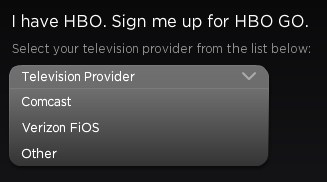 One of the biggest impediments to freeing up space on cable television systems is the amount of analog television programming viewers still watch over televisions not connected to set top boxes. Time Warner Cable customers, already weary from paying $7 or more a month per television to rent digital boxes could eventually be in luck, if they own certain televisions made by Sony or Samsung.
One of the biggest impediments to freeing up space on cable television systems is the amount of analog television programming viewers still watch over televisions not connected to set top boxes. Time Warner Cable customers, already weary from paying $7 or more a month per television to rent digital boxes could eventually be in luck, if they own certain televisions made by Sony or Samsung.
The cable operator announced at this year’s Consumer Electronics Show it would begin testing delivering cable television directly to some television sets equipped to receive the Internet.
Time Warner Cable’s test of IPTV would deliver the cable lineup over its broadband network, which removes the need for an expensive and unsightly cable box.
Since the cable company would only deliver the channels customers were authorized to receive, boxes with complicated digital tuners and encryption schemes would be unnecessary. For the first time in years, consumers could once again get the full cable lineup just by plugging a single cable into the back of their television. No boxes, no TV set remotes rendered useless, no cableCARDs, and no more tangled cables behind the set.
The company could also eventually dump their DVR boxes, which require regular service to maintain and replace worn out hard drives. The future of DVR’s is “cloud storage,” — your recordings would be stored at the cable company on their equipment, ready for on-demand access.
The new IPTV service can also deliver advanced graphics and provide better on-screen programming guides, and even open up the potential to integrate Internet applications with the television experience.
IPTV already exists today with AT&T’s U-verse, which delivers all of its video programming over the same bandwidth their phone and broadband services rely on. But U-verse still has a box attached to each television in the home.
Consumers could end up saving plenty if they got rid of expensive rented cable equipment.
But there are some downsides — the biggest being the currently limited number of televisions equipped to handle Time Warner’s proposed implementation of IPTV.
IPTV has often also opened the door to concerns from content producers about stream security — could a consumer capture perfect digital copies of movies over the cable company’s IPTV network? And what happens politically if the cable company tries to deliver unlimited cable TV over the same broadband network it tried to limit in the past.
Cable providers and phone companies are trying to keep video subscribers happy in hopes they won’t drop service. Comcast and Time Warner Cable both announced last week they are trying to build virtual cable systems that would deliver their channel lineups live to tablet computers, starting over home Wi-Fi networks. Verizon and AT&T are also working on similar features.


 Subscribe
Subscribe





